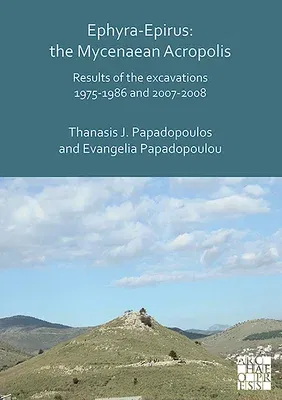Ephyra-Epirus: The Mycenaean Acropolis presents the results of the
1975-1986 and 2007-2008 excavations on the prehistoric-Mycenaean
acropolis of Ephyra, one of the most important Bronze Age sites of
Epirus. Ephyra is a small coastal fortified site in the region of the
lower Acheron valley and the only one that has been systematically
excavated, producing impressive and, in some cases, unique Bronze Age
remains (architectural, burial, pottery, artefacts). It stands on a high
hill, in an exceptional position that overlooks and commands the lower
Acheron valley and provides easy access both to the nearby Glykis
Limin, the Ionian sea and the hinterland. Moreover, it is surrounded by
three successive perivoloi, two of which (middle and lower) belong to LH
III times, with a monumental south entrance gate. Ephyra fits the
criteria of a major fortified settlement, as it covers an important and
strategic prehistoric citadel, cemetery, residence and port of call for
those travelling to the West. Strictly based on the archaeological data
presented, this study suggests that the acropolis had a permanent
Mycenaean population during the entire LH III period and continued to
thrive after the collapse of Mycenaean centres until (and including) the
Archaic period. Finally, it is tempting to suggest a correlation of the
archaeological record with the Homeric tradition (Homeric Efyra,
Od.a..259, b.238).

